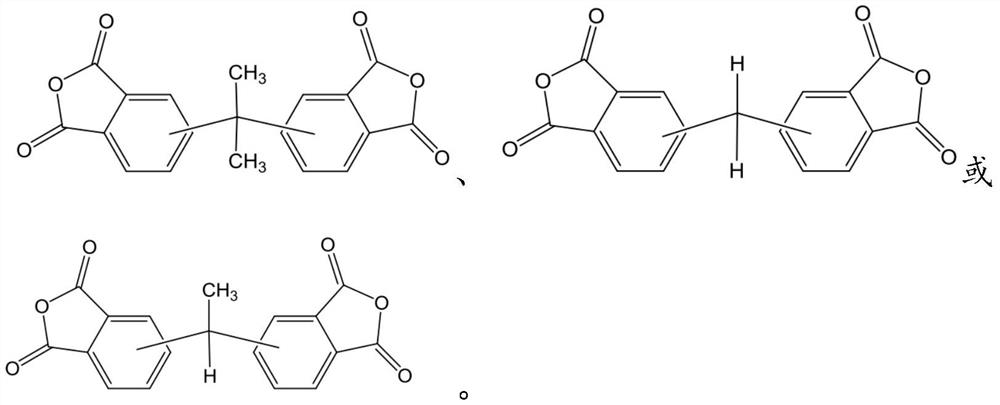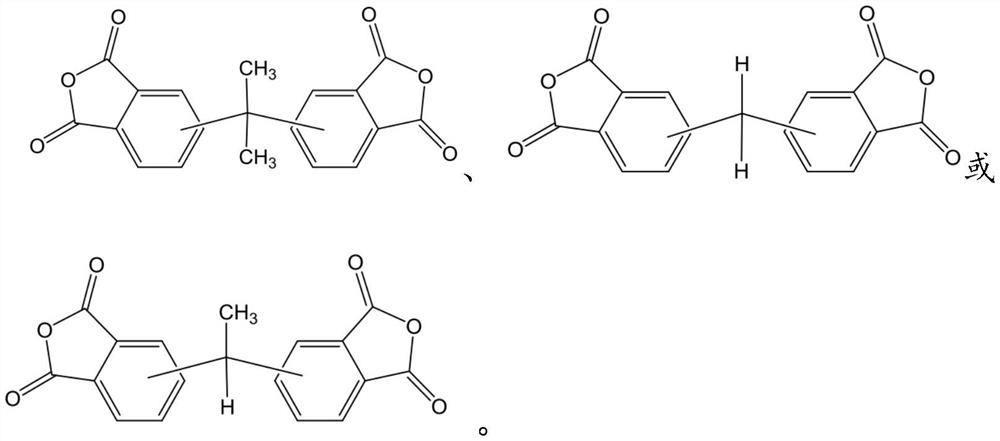Polyimide film, polyamic acid, varnish containing same, polyimide laminate, and method for producing same
A polyimide film, polyamic acid technology, applied in chemical instruments and methods, coatings, layered products, etc., can solve problems such as inability to withstand film-forming temperature, and achieve the effect of high transparency and less coloring
- Summary
- Abstract
- Description
- Claims
- Application Information
AI Technical Summary
Problems solved by technology
Method used
Image
Examples
preparation example Construction
[0087] (Preparation of polyamic acid or block polyamic acid imide)
[0088] When the polyimide to be produced is a random polymer, the tetracarboxylic dianhydride component and the diamine component are mixed and polymerized to obtain a polyamic acid. Here, the ratio (y / x) of the total molar weight x of the diamine component to the total molar weight y of the tetracarboxylic dianhydride component when preparing the polyamic acid is preferably 0.970 to 1.100, more preferably 0.990 to 1.010, and further Preferably it is 0.995 to 1.005. By making the diamine component quantity and tetracarboxylic dianhydride component quantity in the said range at the time of preparing a polyamic acid, it becomes easy to set the intrinsic viscosity of the obtained polyamic acid into a desired range.
[0089] The polymerization method of a diamine component and a tetracarboxylic dianhydride component is not specifically limited, A well-known method can be employ|adopted. For example, a container...
Embodiment
[0155] Hereinafter, the present invention will be described in more detail through examples. However, the scope of the present invention is not limited in any way by this example.
[0156] 1. Tetracarboxylic dianhydride components and diamine components
[0157] The abbreviations of the tetracarboxylic dianhydride component and the diamine component used in an Example and a comparative example are as follows, respectively.
[0158] [Tetracarboxylic dianhydride component]
[0159] ODPA: 4,4'-oxydiphthalic anhydride
[0160] s-BPDA: 3,3',4,4'-Biphenyltetracarboxylic dianhydride
[0161] [Diamine component]
[0162] 1,4-BAC: 1,4-bis(aminomethyl)cyclohexane
[0163] HMDA: 1,6-Hexanediamine
[0164] 1. Preparation of polyamic acid varnish
Synthetic example 1
[0166] In a flask including a thermometer, a condenser, a nitrogen inlet tube, and a stirring blade, add 1,4-BAC: 7.11 g (0.050 moles), HMDA: 5.81 g (0.050 moles) and N-methyl-2-pyrrolidone (NMP ): 193.0g, stirred under a nitrogen atmosphere to make a uniform solution. Thereafter, it was cooled to 15° C., s-BPDA: 26.3 g (0.090 mol) and ODPA: 3.10 g (0.010 mol) were charged therein in the form of powder, and stirred as they were. After about 1 hour, heat was gradually generated, and the viscosity was found to increase. This was heated up and reacted at an internal temperature of 60°C to 70°C for 1 hour, resulting in a uniform solution. Thereafter, it was cooled to room temperature and aged overnight at room temperature to obtain a light yellow viscous varnish. The intrinsic viscosity (η) of the obtained polyamic acid varnish (polymer concentration 0.5g / dL, NMP, measured by Ubbelohde's viscosity tube at 25°C) was 1.18dL / g, which was 25 dL / g obtained by an E-type viscometer. T...
PUM
| Property | Measurement | Unit |
|---|---|---|
| viscosity | aaaaa | aaaaa |
| thickness | aaaaa | aaaaa |
| glass transition temperature | aaaaa | aaaaa |
Abstract
Description
Claims
Application Information
 Login to View More
Login to View More - Generate Ideas
- Intellectual Property
- Life Sciences
- Materials
- Tech Scout
- Unparalleled Data Quality
- Higher Quality Content
- 60% Fewer Hallucinations
Browse by: Latest US Patents, China's latest patents, Technical Efficacy Thesaurus, Application Domain, Technology Topic, Popular Technical Reports.
© 2025 PatSnap. All rights reserved.Legal|Privacy policy|Modern Slavery Act Transparency Statement|Sitemap|About US| Contact US: help@patsnap.com



